Review for Nabari no Ou: Complete Series - Part 1
Introduction
Why'd it have to be more ninja? That was my question when Nabari no Ou Part 1 turned up for review. If it isn't Samurai, or Vampires, or Death Reapers, it's Ninja, all subjects that anime keeps returning to again and again, until you can barely breathe. I'm up to my ears with ninja. For invisible assassins, they are all over the place. Then I had a look at my collection and counted how many specific ninja anime titles I have… There's Ninja Scroll of course… there's the ninja Romeo and Juliet, Basilisk… and that's it. I am not, as it were, drowning in ninja anime. What it is that turns me off the idea is just one series, Naruto. To date, I have seen 284 episodes of Naruto, 4 movies of Naruto, and even an OVA. That may only be one specific anime title about a ninja, but that is one hell of a lot of ninja for one person to take. Still, if a series offers something different, something new, maybe it's time to put away my preconceptions, erase from my retinas the image of a loud midget in a bright orange anorak as the epitome of stealth, and give the ninja of the anime world a second chance.
Nabari no Ou, or The King of Nabari's particular twist is that it is set in the modern day, with its ninja confrontations taking place in the context of modern cities, modern technology and a very recognisable society. Technically Naruto with its ninjas communicating with radio mikes and walkie-talkies is also a contemporary tale, but its world is so drastically different from our own, that it may as well not be. Nabari no Ou's protagonist is just a regular high school kid, living with a normal family, and whose only aim in life is to be something of a social dropout, to remain uninvolved. He gets dragged into the murky world of ninja against his will.
That would be Miharu Rokujo, whose sole ambition in life is to remain as uninvolved as possible. You may think that teen apathy is a common trait, but this kid takes it to an extreme level. He also has a wicked ability to twist people around his finger, inflicting them with extreme guilt trips, but the one thing that stands out is his ability to disappear, to just fade out of a conversation. One minute he's there, the next he's left the building before you even realise. It's odd that such an apathetic soul would attract any interest, but his classmate Koichi insists on drafting him into the school's ninja club, which at the time consists of him, and teacher Tobari Durandal Kumohira.
But the ninja club isn't just an otaku conceit; it's for real. For Miharu lives in a world where ninja are real, have existed in secret since the Feudal era, and even now, in modern Japan compete for supremacy amongst themselves. Your teacher might be a ninja, your doctor, or even your parliamentary representative. For while everyone lives in the real world, for the ninja there is the Nabari world, the shadowy world where their battles continue, with none of the normal people any the wiser. It turns out that Miharu Rokujo is a key player in this world, even though he doesn't know it. The ultimate in ninja arts, the forbidden Shinrabansho technique is embodied in certain individuals, they are born with the knowledge hidden within them, and when they die, the secret is reborn in someone else. And everyone would kill to possess this knowledge. Which means that everyone would kill to possess Miharu. Tobari and Koichi want him to join the Banten ninja club so that they can protect him, but what can two ninja do against the powerful Kairoshu group, descendants of the Iga, who have decided to make use of the Shinrabansho, rather than keep it hidden, as has been previously the case? But the thing is, that if Miharu can do what no other has managed, if he can learn how to use the Shinrabansho hidden within him, then he would become the King of Nabari, and he will have the power to literally reshape the world. If he could only be bothered…
The first thirteen episodes of Nabari no Ou are presented across two discs from Manga Entertainment.
Disc 1
1. The Awakened One
2. Raimei Arrives
3. Surprise Attack
4. Duty Declared
5. Greed
6. Choices
7. A Mind Made Up
Disc 2
8. A Mind Passed Along
9. Prelude
10. Polka - Raiko and Raimei
11. Curtain Call
12. Will
13. The Schoolhouse That Never Sleeps
Picture
Nabari no Ou's 1.78:1 anamorphic transfer is unfortunately an NTSC-PAL conversion. Most of the anime being released in the UK now come via Australia, who have for the past twelve months or so been creating native PAL conversions for their anime. I guess that marks this as an older title. You do then get a hint of ghosting and judder, the occasional blended frame. That isn't as apparent in Nabari no Ou as it would be in other anime, as the look of the show is very bright, almost overexposed, with the colours fading to pastels. The animation is pretty standard, lacking in the energy and dynamism of a higher budget production, while the character designs are generic enough to be non descript. Nabari no Ou is one of those 'does what it says on the tin' anime.
Sound
You have the usual options of a DD 5.1 English track, a DD 2.0 Japanese track, with translated English subtitles or signs only. I opted for the original language track as always and found it to be pretty much par for the course for anime of this genre. The stereo does enough to bring across the action, while the music is initially off-putting with its sitcom style, but gradually grows to suit the show well. The 5.1 English audio is something I just sampled, and found little to distinguish it from any other Funimation dub. I was also a little disappointed, given the nature of the Tobari character's back-story, that he didn't get an Irish accent, just another neutral American one. The subtitles are clear, legible, and free of error.
Extras
The discs' presentation is the usual static menus and jacket pictures for those whose players will display them.
Disc 1 offers an audio commentary to go with episode 2. Chris Burnett (Koichi), and Eric Vale (Tobari) get together to chat about the episode. It's an awkward, gappy chat, not helped by ADR director Monica Rial on the outside of the booth, directing the commentary by means of typing in questions for the commentators to answer.
Disc 2 has the textless credits.
Conclusion
It's a good thing that anime isn't released 4 episodes to a volume, as it used to be just a few years ago. If someone had given me a volume 1 of Nabari no Ou to review, with just four episodes to it, I doubt that I would have bothered with a volume 2. It starts off as the most generic, shonen action show that you can imagine. You have your unexpected teenage protagonist, thrown into a world that he simply had no inkling of, a world where his fate is somehow tied to the fate of everything and everyone, and you have a whole bunch of ninja fighting over him. You have your good guy and bad guy set-up, a diverse bunch of characters, all with their own secret powers and special moves, and with these being ninja, they tend towards the daft extreme of things, people who can transform into weird animals, people who can read minds and warp perceptions, and perhaps the most irritating of special skills, a ninja who can kill by just pointing at his target. The characters and their back stories all seem clichéd, and for a ninja story set in the modern world, there doesn't seem to be a lot recognisable as such.
There are only two points of interest in the show at this juncture, two characters that just about hold the attention. There is the central character of Miharu Rokujo, as apathetic and uninvolved a character as you can imagine. You normally expect the protagonists to have some emotional involvement with what happens to them, but Miharu is so understated and low impact that he wouldn't register at all, were it not for a mischievous personality, and a tendency to torture people around him, simply by being so adorable, and then loading them with guilt trips. Then there is his teacher, Durandal Tobari Kumohira, a ninja of Irish descent, who despite his skill doesn't quite fit the image of the typical ninja, especially with his refusal to kill. He's one of the people who Miharu can twist around his finger, leading to much agonised outbursts of frustration on Tobari's part. He also has a quirk in that he's afraid of travelling by any other means than by foot. This adds to the humour. But the balance in the show doesn't work at first, the comedy routines hang awkwardly with the seriousness of the tale, the various fight sequences, and the fact that there is quite the body count in the early episodes.
Also, we know who the good guys are, we know who the bad guys are, the lines are clearly delineated, and it all seems to be flowing down a very predictable path. Then, around episode 6 or 7, Nabari no Ou starts throwing a few twists and turns into the story, it starts messing with the preconceptions it engendered early on, and it turns everything on its head. The set-up was quite simple. We had five ninja villages surviving in modern Japan, and the one that had the Shinrabansho power would rule supreme. The Shinrabansho power is embodied in Miharu, even though he can't use it, which makes him a target for all the others. The Banten village where he lives, initially unaware of the ninja Nabari world, is really just limited to two ninja, Tobari and his young disciple Koichi. Their duty is to protect Miharu, and ensure the Shinrabansho is never used, as per prior agreement among the villages. The problem is that the Kairoshu group have changed their minds, and now want the power to change the world and to rule it, hence good guys and bad guys.
The early episodes reinforce that, with Miharu and his protectors travelling to the Fuma village to seek advice, and running into a band of Kairoshu ninja who are there to steal a secret text that will help them control the Shinrabansho. The lethality and force with which they strike leaves no doubts as to the seriousness of Miharu's situation, especially when they encounter a monster ninja named Yoite, who has the ability to strike from a distance anyone he points at. So far so Naruto, but from around episode 6 it begins to get complicated, and more importantly, it begins to get interesting. Early on, Miharu and the others encounter a Fuma samurai girl named Raimei, who quickly joins them to protect Miharu. But she has an agenda of her own. Her family was murdered, and she's been seeking the killer, and the killer happens to be her own brother Raiko. It turns out that Raiko is a member of the Kairoshu.
Miharu runs into Yoite again, but learns that far from being a ruthless killer, he's actually a much more sympathetic character, perhaps as damaged and withdrawn as Miharu himself. More importantly, it turns out that every time he uses his ability, he cuts his own life short, and that time is running out for him. It also turns out that he has a certain request for Miharu, that he wants him to use the Shinrabansho ability for him, but not in the way that the Kairoshu want. We then encounter another ninja village, the Togakushi, and they want to hire Tobari's group for an assassination mission. The price they are willing to pay is high, but they also have a hold over Tobari that ensures that he will complete the mission, even if he doesn't want to.
Around this point in the show, the contrasts between the ninja world and the real world are beginning to come into focus, as we learn more about these characters, and how they balance two lives, their public faces and their aspirations as ninja. We also see what it is that motivates many of these characters, and how these motivations are twisted and abused by various factions to manipulate and control. The more the series progresses, the more we learn of the characters, the more the lines between the good guys and the bad guys blur, and the definitions switch. By the end of the second disc, at the halfway point of the series, Tobari certainly doesn't look the kindly protector that he did at the start, while the Kairoshu don't seem as malevolent. The viewer's opinion may switch, and it's no surprise that Miharu's opinion wavers as well. It also becomes clear that no group is of a piece, and that splits and divisions among them are apparent. Nabari no Ou's character dynamic is fluid and variable, it switches at the drop of a hat, and it certainly makes it interesting to watch. At the end of the collection, both the Kairoshu and the Banten have travelled to the Koga village, where they are ostensibly there for a peace conference, except both groups have their own agendas, while the Koga group is the middle of its own power struggle. It's certainly an interesting cliffhanger to leave things on.
Nabari no Ou isn't the most immediate draw in anime. Its animation is simplistic and hardly up to the standard of its contemporaries. Also, it takes a hell of a while to get going, with six episodes of clichés, poorly balanced comedy and drama, and unfulfilled promise to deal with. It's really only with the second disc that it begins to fulfil that promise, the characters gain dimension and develop beyond their clichés, and the story really kicks into gear. By the end of the collection, Nabari no Ou had grabbed me in a way that I wouldn't have expected early on. It certainly makes the second collection one to look forward to. A slow grower.
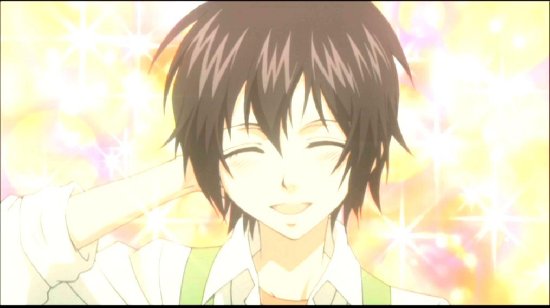

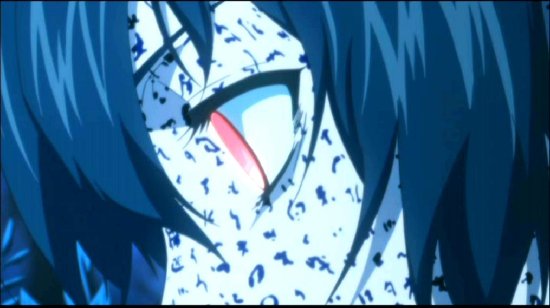
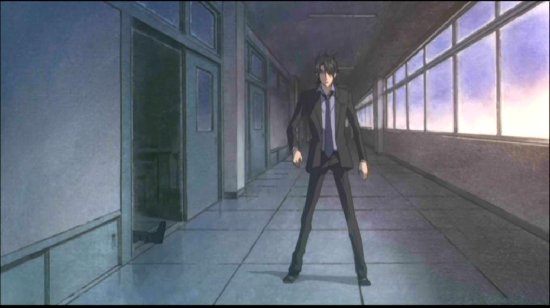

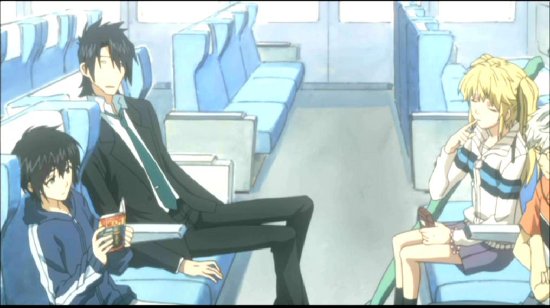
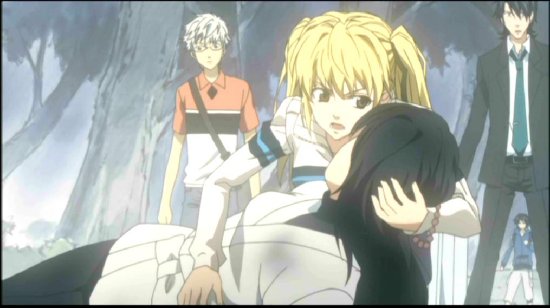
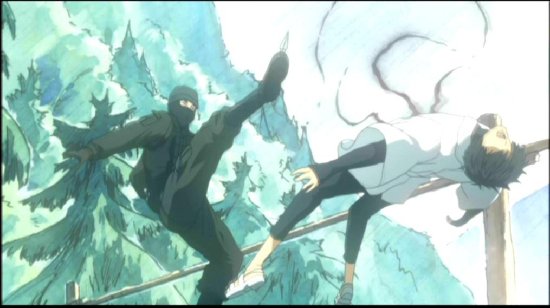
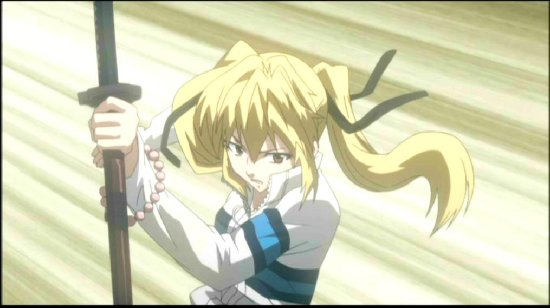
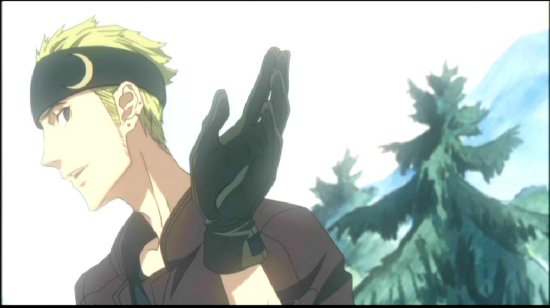

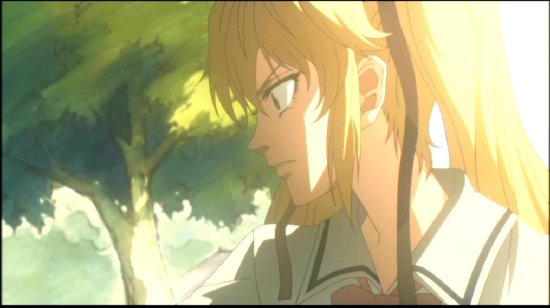
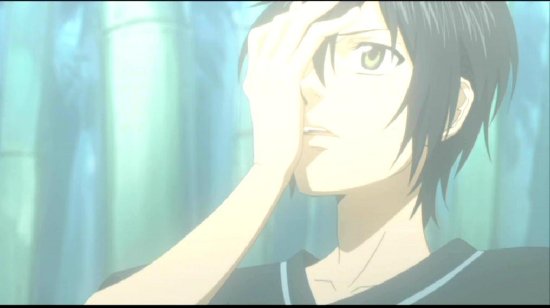
Your Opinions and Comments
Be the first to post a comment!